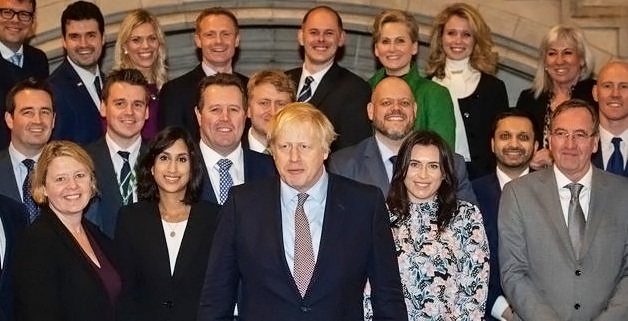With the Government putting up taxes to pay for the social care crisis, Conservative MPs are in need of some care of their own. In the Telegraph, one anonymous MP is reported as saying that he “had gone home to his partner and cried because of the decisions he had had to vote on, adding that he did not know what a Tory was any more.”
He and his colleagues should brace themselves for more ideological pain. The fact is that the Conservative Party now has a split personality. While the Parliamentary party is economically liberal — if not downright libertarian — the people who vote for them are anything but.
This can be seen in the following chart — tweeted by Tim Bale — on the economic values of Conservative and Labour MPs, members and voters:
If you're thinking about how Johnson's social care plan's tax-rises and distributional effects are going down differently with Tory MPs and Tory voters, there might be a few things in this graphic from our @UKandEU Mind the Values Report worth pondering. https://t.co/3HKeAW2s4w pic.twitter.com/czpEJKNTF8
— Tim Bale (@ProfTimBale) September 8, 2021
As you can see there is a much wider divide between Tory MPs and Tory voters than there is between Labour MPs and Labour voters. In reaction to statements like “there is one law for the rich and one for the poor”, the Conservative Parliamentary party is a long way to the Right of the public, including the Tory-voting public.
So what should the party do? One approach might be stick with economic liberalism and hope that cultural issues are enough to keep voters onside. However, that strategy isn’t working very well for their Republican cousins in America (the GOP has only won the popular vote once in the last eight Presidential elections).
The other way forward is to keep their libertarian sympathies to themselves and implement the agenda that their voters clearly expect from them. Boris Johnson certainly wants to give that impression. But wouldn’t that mean that both the main parties had basically the same economic programme?
Not if one looks closer at the chart. There are two value statements on which Tory MPs and voters are quite close to one another. The first concerns redistribution. Tory voters want government to intervene in the economy to achieve fairness not equality. Understanding the difference between these two objectives is key to achieving a distinctly Tory but popular economic agenda.
The other issue of comparative agreement was on whether “big business takes advantage of ordinary people”. It would seem that Conservative MPs are more willing to accept there may be a problem with over-mighty corporations than with capitalism in general.
These are the right instincts to follow. In Conservative hands, government intervention shouldn’t be seen as a betrayal of capitalism, but as an attempt to save it from its worst tendencies.











Join the discussion
Join like minded readers that support our journalism by becoming a paid subscriber
To join the discussion in the comments, become a paid subscriber.
Join like minded readers that support our journalism, read unlimited articles and enjoy other subscriber-only benefits.
Subscribe